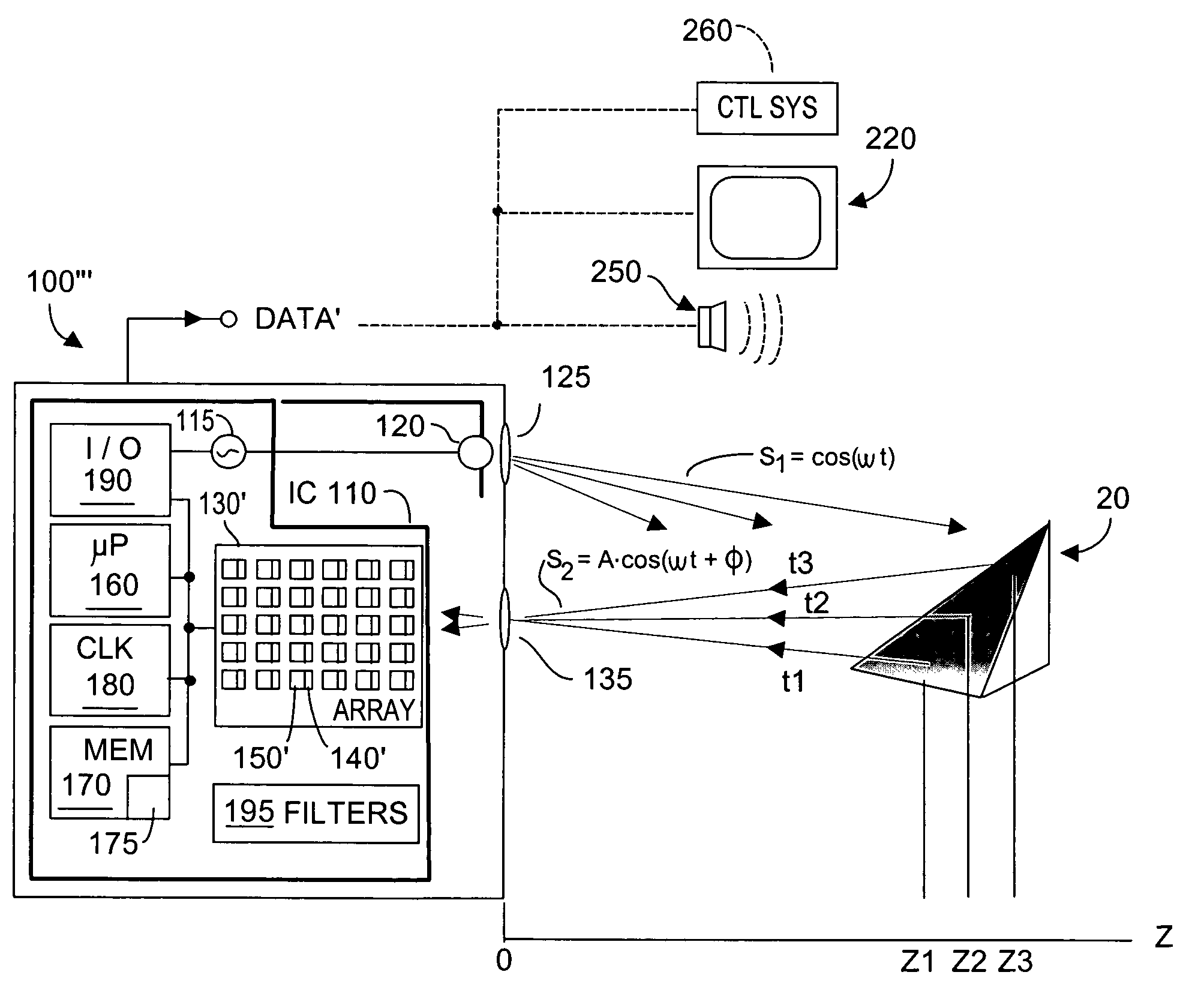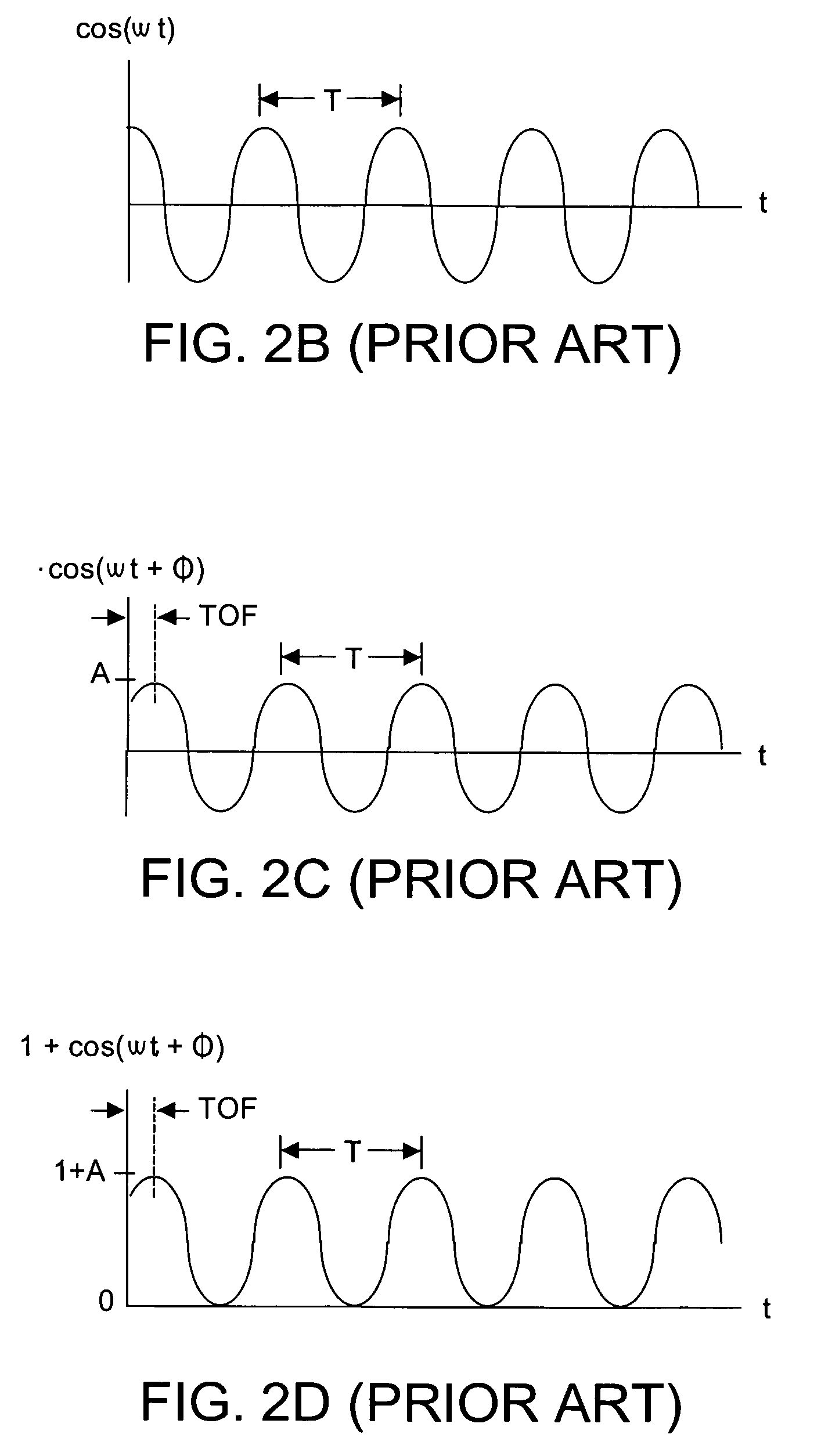Methods and system to quantify depth data accuracy in three-dimensional sensors using single frame capture
a three-dimensional sensor and depth data technology, applied in surveying, distance measurement, instruments, etc., can solve the problems of z-axis error or uncertainty, position error is a static error in accuracy, etc., and achieve high reliability
- Summary
- Abstract
- Description
- Claims
- Application Information
AI Technical Summary
Benefits of technology
Problems solved by technology
Method used
Image
Examples
Embodiment Construction
[0035]FIG. 4A depicts a phase-shift system 100″′ with software routine 175 and threshold filtering system 195, according to the present invention. Upon execution, software routine 175 caries out the present invention. Software routine 175 may be stored in a portion of memory 170 and may be executed by microprocessor unit 160. System 100″′ operates so as to quantify accuracy of the Z or depth data acquired by the three-dimensional sensor array 130′. Output from system 100″′ may be used to create a user-visible display 220 and / or to enable an acoustic warning device 250, and / or to command operation of external control systems 260. Unless otherwise stated, reference numerals in FIG. 4A may be understood to refer to elements identical to what has been described with respect to system 100″ in FIG. 2A. As such, it is understood that the various embodiments of system 100″ described below may be fabricated using CMOS technology upon a common integrated circuit substrate.
[0036]As noted, pixe...
PUM
 Login to View More
Login to View More Abstract
Description
Claims
Application Information
 Login to View More
Login to View More - R&D
- Intellectual Property
- Life Sciences
- Materials
- Tech Scout
- Unparalleled Data Quality
- Higher Quality Content
- 60% Fewer Hallucinations
Browse by: Latest US Patents, China's latest patents, Technical Efficacy Thesaurus, Application Domain, Technology Topic, Popular Technical Reports.
© 2025 PatSnap. All rights reserved.Legal|Privacy policy|Modern Slavery Act Transparency Statement|Sitemap|About US| Contact US: help@patsnap.com



